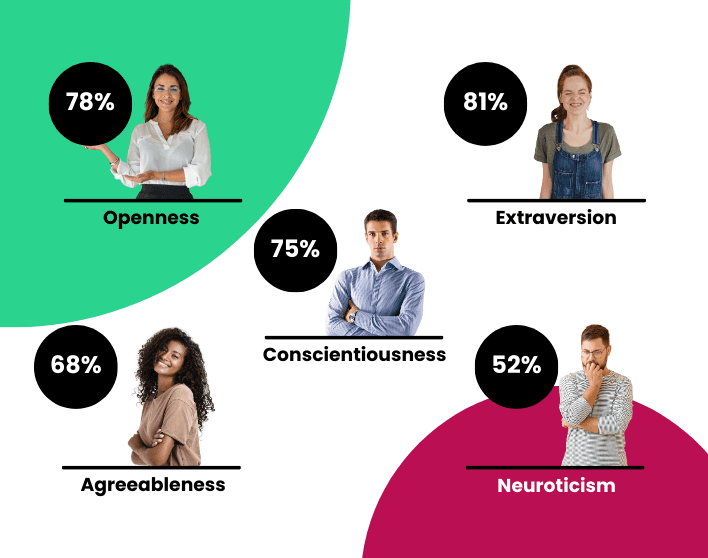The Bryq Team
HR Experts
Confirmatory Bias Definition – What is It?
Let’s go over the confirmatory bias definition according to cognitive science and psychology. It is the inclination people have to interpret or search for facts confirming their existing beliefs. Also called confirmation bias, it is a type of cognitive bias. While sometimes this behavior is deliberate, often it is unconscious.
This tendency gets stronger when the existing beliefs are personal and deeply emotional for the person. Long-held beliefs are hard to change. It is all related to how people interpret information. Everyone already trusts their own personal beliefs about about things.
These biases show up often in recruitment and can include preference based on race, gender or age.
Ways Confirmatory Bias is Shown
There are a few types of confirmatory bias definitions as it can present itself in different ways.
1. Skew Ambiguous Information
One way it works is though ambiguous information. People tend to skew it unconsciously to support their beliefs and opinions. If a person already believes something, almost anything can be distorted into supporting their beliefs. This can lead to poor decision making. For example, someone who thinks a certain politician is a liar. Any news articles involving that politician will be slanted to become information that confirms this. An article may state that they pledge to donate thousands to a charity. This becomes an example of them being a liar. ‘They’ll never follow through. What a liar.’
2. Dismiss Opposing Views
Another way the bias is shown is when someone hears opposing views that contradict their points of view. They are likely to dismiss it. For example, about the same politician, there is an article the following week saying that he followed through and donated to the charity. The person may think ‘I bet he didn’t pledge as much as he said he would’.
3. Gather Information to Support Your Opinion
Others may seek information to support their beliefs. In the example situation, they may choose to only read newspapers that tend to support the opposing party’s politicians. In this case, it is no surprise that they will read only negative opinions about the politician they distrust. When you gather information to support your views, of course, your beliefs will be strengthened as you see others supporting and agreeing with you.
Effect on Recruitment
When it comes to recruitment, the confirmatory bias definition is when you have a preconceived notion about a candidate. You may take ambiguous behaviors in an interview situation as evidence that supports your opinion.
Confirmation bias often comes into play in situations with internal candidates. If it is someone that you already know, you will of course already have an opinion about them and whether they are suitable for the role. That’s natural.
However, as a recruiter or HR manager, you must be prepared to consciously set aside your preconceived ideas. Regardless of whether they are positive or negative. You need to interview the person as though they were any other candidate.
Confirmatory bias can also affect external recruitment. For example, you may have an impression of the person from their resume or a first impression when they come in for an interview. You should try not to predetermine how the interview will go based on this. Wait until after the interview to make your decision.
How You Can Mitigate This Bias
Being aware of the confirmatory bias definition is a good place to start. By becoming cognizant of your bias, you are a little of the way towards overcoming them. It is important for you to work on remaining as impartial as possible. Biases can lead to passing on great candidates or hiring ineffective staff.
1. Blind Recruitment
One new recruitment trend is to develop a ‘blind recruitment’ process. This is when all identifying details are removed from candidates’ resumes and cover letters. Examples of details removed would be age, gender, ethnicity, name, and education.This can help mitigate the effect that unconscious bias can have on recruitment. This allows hiring managers to decide who to interview based on experience more than anything else. This can be done by an administrator or another recruiter, so you don’t need to see the applications in advance. Another way to a blind recruitment process is with talent assessment platforms that remove bias by matching candidates to roles based on cognitive skills and personality traits that are relevant for the role without the need to view a candidate's resume in the initial screening phase.
2. Peer Review
The confirmatory bias definition of having preconceived ideas about someone can also be mitigated through peer review. Rather than deciding yourself who to interview, you could ask some of your peers to look at applications and shortlist. Then, you can go into the interview without any existing notions of the interviewees.
3. Ask Questions
If a candidate gets to the interview stage, you will have the chance to ask questions to confirm your beliefs (or not). The key here, though is to be ready and willing to listen to the answer with an open mind. Be open to changing your notions about this person – or what is the point of the interview?
By becoming aware of the confirmatory bias definition, you can now start to mitigate it in your recruitment processes. Be mindful of if you are searching for information to confirm your beliefs or trying to discount evidence that you are wrong. Try using some of the above recruitment techniques to challenge yourself to look at candidates differently.








